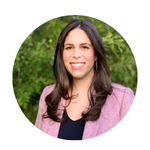World Cancer Day is recognized around the globe on February 4 each year to unite the international community in a shared day of awareness. “Close the Care Gap” is the 2022-2024 theme, which aims to highlight the need for equitable access to healthcare, specifically related to cancer prevention, diagnosis and treatment. The three-year campaign was inspired by the COVID-19 pandemic, which highlighted the great health disparities that exist around the world and the need to ensure that all individuals can access care. The 2022 campaign aimed to recognize the inequities in cancer care around the globe, and the 2023 campaign was about closing the care gap within your communities. This year, the campaign focuses on bringing attention to engage our leaders in the push for lasting change.
In the US, cancer is the second leading cause of death, despite declining death rates over the last 20 years. This decline is likely attributable to several public health successes which were highlighted in the 2022 White House Fact Sheet on President Biden’s Cancer Moonshot, including more effective smoking cessation approaches, HPV vaccinations, and improved diagnostic tools to help detect cancer early when it is typically more easily treated and new innovations in cancer treatment, such as immunotherapies.
Globally, cancer is the second leading cause of death worldwide, with 70% of cancer deaths occurring in middle- and low-income countries. While cancer deaths are declining in the US, globally, cancer rates continue to rise, with much of the expected future cancer burden attributable to increasing risk factors, such as smoking, unhealthy diet, physical inactivity and fewer pregnancies.
It is well-established that to effectively control cancer on a population level, there need to be resources devoted to prevention, early detection, effective treatment and pain control. Unfortunately, low- and middle-income countries often lack the resources required – as a result, individuals in these countries often go without access to preventive measures like vaccination and screening tools, are less likely to be diagnosed early, and may not have access to cancer treatment.
But even in the US, disparities in cancer outcomes exist, in large part due to social determinants of health such as socioeconomic status (SES), race, income, education status and geographical location. A 2022 report from the American Cancer Society highlighted several disparities across incidence rates, stage at diagnosis, and survival and death rates. For example, Black women have higher cancer incidence rates than White women for all major types of cancer (except breast and lung). Black people were also the least likely of all races to have an early-stage diagnosis of cancer that have a recommended screening test (breast, cervix, and lung). And in general, survival after a cancer diagnosis is shorter for people of all races who have a lower SES and who live in a more rural area, compared to those with higher SES and in or near a metropolitan area.
While many of the root causes of cancer disparities are not within one’s control, don’t be discouraged. You can help close the care gap in your own ways – whether through community activism to ensure local neighborhoods have access to healthy food, making financial contributions to organizations that are improving access to healthcare for individuals in underserved communities, or by encouraging your loved ones to stay up-to-date on their preventive care screenings.
Vitality recognizes the importance of prevention and early detection and rewards our members for taking the necessary steps to protect their health. Members and their spouses may be eligible to earn points for preventive screenings, including colorectal screenings, mammograms and pap smears. Submit proof of your screening to earn points!

Lianne E. Jacobs, MPH, Health Communications Strategist, has a master’s degree in public health from Yale University. She is the only indoor cycling instructor who can’t ride a bike. She enjoys traveling the world, laughing at her own jokes, changing diapers, and tricking her husband into eating baked goods made with hidden vegetables.






